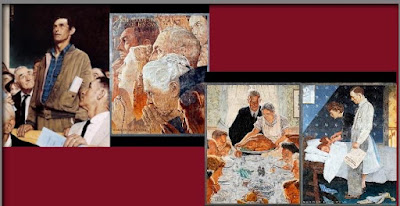Engage:
Explore: Making History Alive
Using technology in the classroom can make lessons more interesting and engaging for students. One way that teachers can incorporate technology into their lesson is through the use of slideshows. As teachers discusses events and individuals, they can use a slideshow presentation to show pictures, maps and timelines. This is so that students can make the connection between what is being said and what is being seen. Teachers can also incorporate clips of videos during the lesson to show reenactments of historical events. Teachers can also take the opportunity to pause the videos for discussion as well as give students the opportunity to ask questions or make comments. There are also many different tools and websites on the Internet for teachers to access and use for their lessons. Two of the ones that I found to be most interesting were:
1. Bringing History to life for you Students -- DocsTeach is for teachers, students and history explorers. I really like this resource because it allows anyone to access thousands of primary sources ranging from letters, photographs, speeches, posters, maps, videos and more that span the course of American history. There is also an option for creating your own activities using the online tools in this resource. It's as simple as selecting a tool, choosing a primary source and then customizing instructions.
2. Document Analysis with Students -- I really like this resource as well because it shows students the first steps in working with primary sources. It also teaches students how to think through primary source documents for contextual understanding and to extract information in order to make informed judgements. The steps in this process include:
- Meeting the document
- Observing its parts
- Trying to make sense of it
- Using it as historical evidence
Explore: Learning to Teach with Primary Sources
Primary sources are extremely important and helpful when it comes to teaching Social Studies/History. Primary sources are documented evidence of history and they help students relate in a personal way to events of the past. They also help to promote a deeper understanding of history. Primary sources give us a unique insight into the past. We can better understand how events influenced people's feelings and how they thought about them at the time.
Explain & Apply:
An artifact bag project is a hands-on activity that can be integrated into any grade and subject. A teacher can use an artifact bag for many different topics, subjects and units within a grade. Artifact bags engage students in learning, along with them taking pride in their discoveries based on the artifacts within the bag. Before the assignment to create an artifact bag, I had never heard of it before. When I began creating the artifact bag project I had to think of what event, act or person I wanted it to be about. I decided that I wanted it to be about the French and Indian War. If I were to teach this lesson to an actual class, I would teach it using the inquiry method because of the fact that students are able to discover artifacts and understand where they came from.
Elaborate:
Chapter 12 Digital Report - Connections to History
- Essential Question - How do we make History come alive?

Danielle, what do you need to do to find out the meaning of these famous pictures? You could have researched and found out that they are created by Norman Rockwell "Four Freedoms" Check this post: https://blog.artsper.com/en/a-closer-look/10-things-to-know-about-norman-rockwell/ You can teach a great social studies lesson in civics with an integration of art!
ReplyDelete